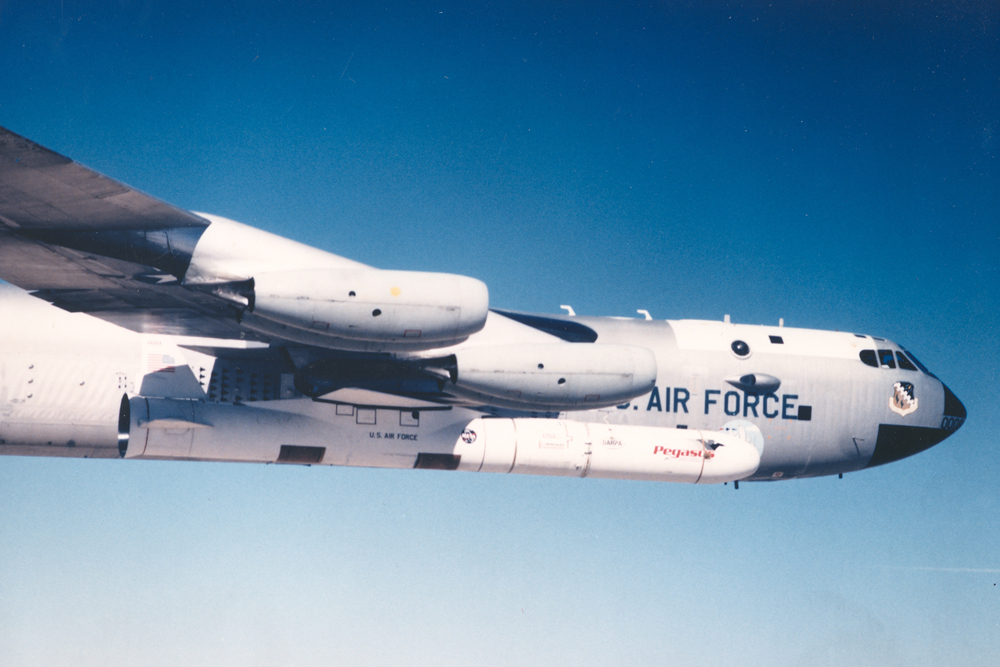Space History Photo: Pegasus Rocket Carried by B-52

In this historical photo from the U.S. space agency, a Pegasus rocket is carried to altitude beneath a B-52 on Apr. 5, 1990. The Pegasus was developed as a low-cost way to put small payloads into space. It's somewhat like an oversized model rocket. An air-launched, three stage, all solid-propellant, three-axis stabilized vehicle, the Pegasus can put a 1,000 pound payload into low-Earth orbit.
To get there, a Pegasus is released from a B-52 at about 39,000 feet, freefalls for around 5 seconds, then the first stage motor fires and accelerates the rocket to over 5,000 mph. The motor burns out after about 76 seconds, and a second stage ignites at the 97-second mark. Nearly 10 minutes later, the rocket can reach an altitude of 460 miles above earth, doing nearly 17,000 mph, and the payload is released.
Each weekday, SPACE.com looks back at the history of spaceflight through photos (archive).
Get the Space.com Newsletter
Breaking space news, the latest updates on rocket launches, skywatching events and more!
Join our Space Forums to keep talking space on the latest missions, night sky and more! And if you have a news tip, correction or comment, let us know at: community@space.com.

The National Aeronautics and Space Administration (NASA) is the U.S. government agency in charge of the civilian space program as well as aeronautics and aerospace research. Founded in 1958, NASA is a civilian space agency aimed at exploring the universe with space telescopes, satellites, robotic spacecraft, astronauts and more. The space agency has 10 major centers based across the U.S. and launches robotic and crewed missions from the Kennedy Space Center in Cape Canaveral Florida. It's astronaut corps is based at the Johnson Space Center in Houston. To follow NASA's latest mission, follow the space agency on Twitter or any other social channel, of visit: nasa.gov.









